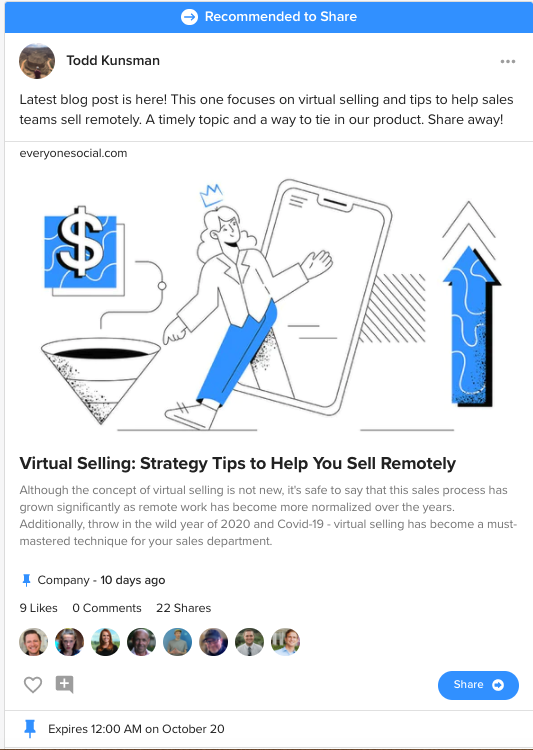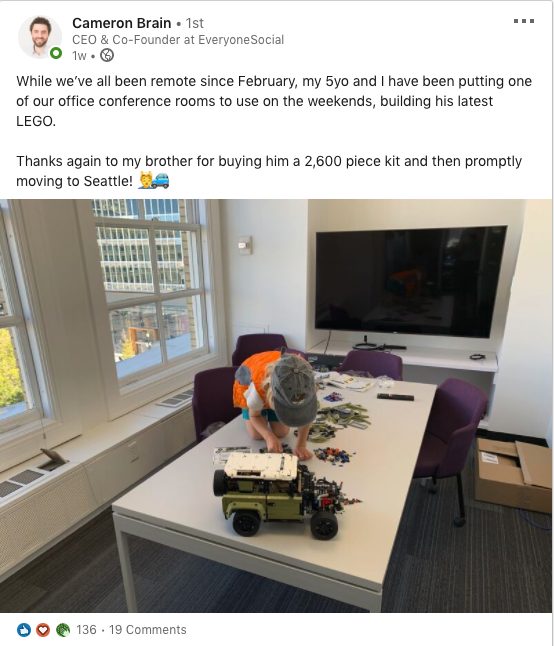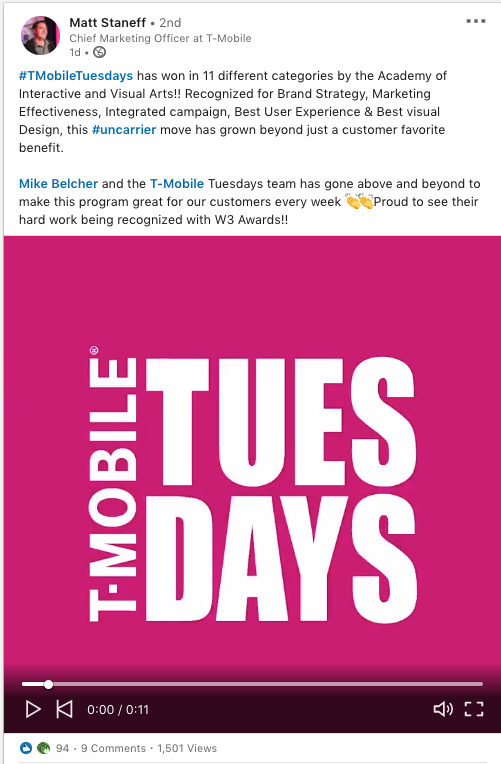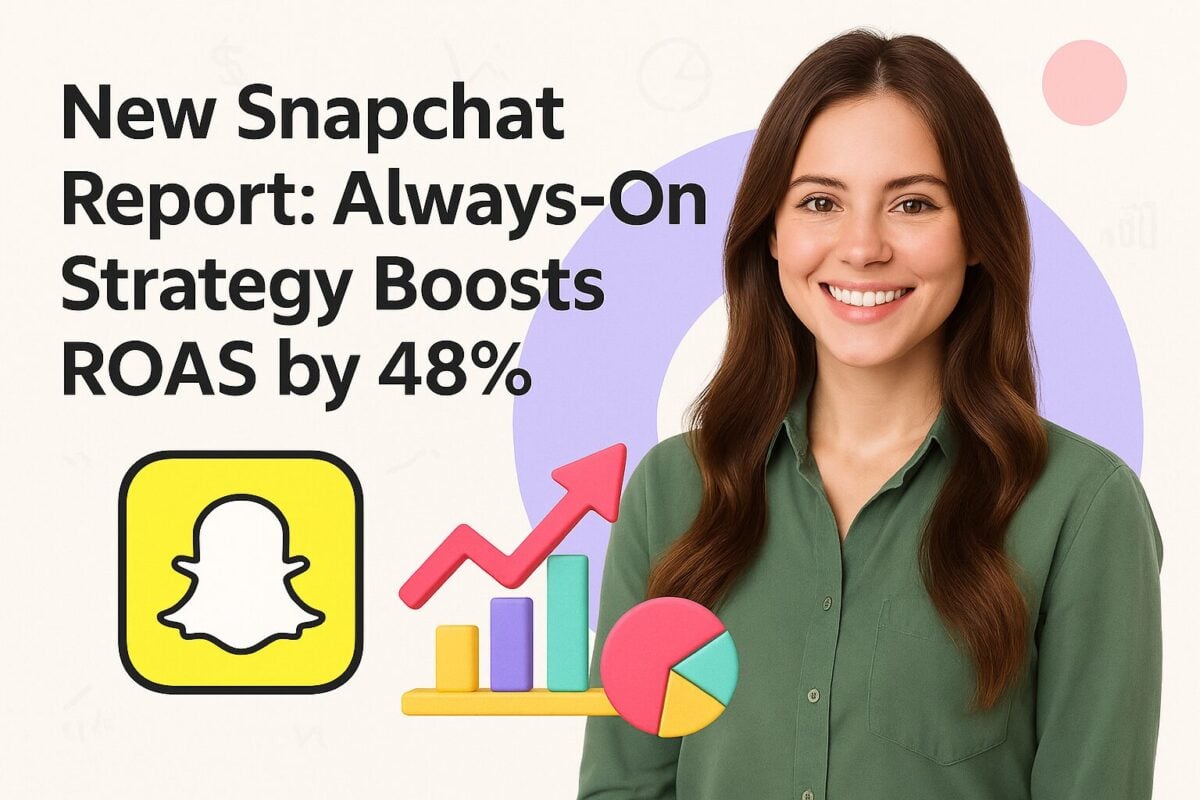No matter what position you might hold in the marketing department at your company, you’ve probably been inundated with “buzzwords” and new strategies on some recurring basis.
Yet many of those seemingly buzzy terms can quickly become valuable to the success of the business, especially when it comes to lead and demand generation. For example, account-based marketing, influencer marketing, conversational marketing are a few that may come to mind. But all of these methods play an important role in generating marketing results and brand awareness.
However, another growing term and strategy that is becoming increasingly important is the idea of employee activation. But what is it? Why does it matter today? And how can your organization build an effective employee activation program?
Employee Activation Program: Your Complete Guide to Success
What Is Employee Activation?
Employee activation is a formal business program where the goal is to encourage your company employees to authentically engage, create, and share content about topics that interest them and can also relate to their work.
Another word that might come to mind, is employee advocacy. This concept has been around for nearly a decade, originally benefiting specific industries and departments therein, but is now imperative for any organization.
Yet, often when people hear either of these variations, they tend to assume it means forcing employees to blast the same boilerplate message and company content to their networks. This is completely wrong and that is NOT a strategy that will yield long-term success.
For one, employees do not want to spam their social networks with bland copy and generic company content. And secondly, audiences can see right through those social shares and have no interest in reading it.
And above all, employee engagement in this process or program is lost. Members of your company can see it only benefits the company through this generic program and adoption of these efforts quickly wane over time. Instead, employee activation is about providing employees some guidelines, but allowing them to share their thoughts, ideas, and content that aligns to their interest or professional goals.
But why does this matter and how does it benefit your organization?
Why Employee Activation Matters
When it comes to content and information being seen by the masses, there are more challenges than ever before. For example:
- Paid ads are getting more expensive and people are tuning them out
- Social algorithms tend to bury company page content and news
- People are looking for more genuine and authentic content
When your company is activating employees and investing in them further, you’ll start to find them more informed, increasing overall engagement, and become eager to be a part of more company initiatives.
This also helps your company reach people who may be unfamiliar with your brand, product, or services -- without coming off like sales spam. But it also helps employees who get involved too as it expands their own network reach, thought leadership, and can benefit their professional development.
That said, employee activation will benefit multiple areas of your company from marketing and sales, to employee engagement, communications and employer branding.
Here is some data gathered over the years as it relates to employee activation:
- Content shared by employees receives 8x more engagement than content shared by brand channels. (Social Media Today)
- Sales reps using social media as part of their sales techniques outsell 78% of their peers. (Forbes)
- Employees of socially engaged companies are more likely to stay at their company, feel optimistic about their company’s future and believe their company is more competitive. (Prophet)
- Use of social software by employees can improve productivity by 20-25%. (McKinsey)
- Employee shared content is word-of-mouth marketing on social media – and 84 percent of consumers trust people they know, while only 15 percent trust brands.
- Workplace Research Foundation found that increasing employee engagement investments by 10% can increase profits by $2,400 per employee, every year.
Remember, employee activation is a two-way street and should benefit both the individual and company.

Source: twitter.com
Tips to Building An Employe Activation Program
Hopefully you are more intrigued and excited about the idea of building an employee activation program. It can be incredibly impactful on the business and on employee’s professional careers, but is something your organization needs to dedicate time and resources too.
If you are ready to get started with an employee activation program or need some tips to improve your current strategy, the suggestions below will set your company on the right path.
It starts with work culture and employee experience
Before you even move on to creating a program and strategy for employee activation, your company needs to examine the current work culture and employee experience.
These two terms might be eye-rolling because they are talked about so much, but there is a reason that is the case. It really matters for the success of your business!
How do employees view your culture at work? Are you investing in their success and recognition often? Or does your company just check some boxes, hoping that satisfies basic needs and will improve the employee experience.
When companies create work environments, collaboration initiatives, and consistent recognition of employees more often and genuinely, you naturally build an army of people willing to talk about your company organically.
Once your culture is in a great spot, it’s important to make employee activation ingrained into work going forward. Making it clear that employee experience is something your company believes in, supports, and encourages employees to get involved in.
Harness current brand advocates for on-going support
Pending the size of the company you work for, you probably have a few people already advocating about your company and sharing content consistently on social media.
According to Weber Shandwick, about 98% of employees use at least one social media site for personal use, of which 50% are already posting about their company.
Easily overlooked, you might not have realized that your company has some highly active employees on social media already and even some building their own personal brands. And these are the employees your company should connect with first for a few reasons:
- You can learn about their motivations for being a brand advocate
- You’ll discover how it has benefited them and the results they are seeing
- Helps you better understand what content is resonating with their audiences
- Let’s your company learn how to replicate their successes and how to better recognize employee efforts
- And these advocates can help you lead your employee activation program and strategy, rally employees around the idea, and be the leaders of the program
Create a friendly social media policy
It’s probably safe to say that every company has some sort of social media policy in place. Social networks are unavoidable and there should be some guidelines in place.
However, how accessible is it to employees? Do they know what is and isn’t allowed when it comes to social at work? Are they afraid to get involved because they assume there will be repercussions?
If you plan on building an employee activation program, it’s important to assess and refresh your current social media policy. Make it easy to read, don’t overcomplicate it, make it clear that yes you want employees to be actively creating, sharing, or engaging with social media. Bring the “IRL” into the “URL” by making it easy for employees to translate their workplace experience into the employer brand.
And beyond that, every employee should know the policies and have quick access whenever they need. This is where an employee activation platform (more on that later on) can be beneficial as it becomes a place to organize any policies too.
Of course, your company cannot force employees to share to their personal social accounts. Always make it clear in your policy this is part of the culture and you encourage everyone to get involved, but it’s not required.
Additionally, explain the benefits to the individuals who participate besides how it helps the company: for example growth of their professional network and new career opportunities.
Establish employee activation program goals
Often, organizations assume an employee activation program is as simple as telling employees to share content on behalf of the brand. With that mindset however there is no thought or strategy behind it and quickly the program fails or barely even starts.
There are a few set goals your company will have to layout. The first two are important for any organization to understand before exploring employee activation.
- Easily empowering employees to further the mission of the brand and increase awareness of the organization as a whole.
- To also empower employees to help develop their own professional goals, give them confidence in their knowledge, and show off their expertise.
Incentivizing can help this process, but you don’t want a team of people sharing just for the sake of hoping to win a monetary or material prize. Instead, you want to show why their insights are valuable, that you encourage their professional growth and passions, and recognize they are the face of the brand.
Beyond those two necessary goals, your company should identify secondary goals for your social program. Do you want to increase marketing leads and web traffic, help sales close deals faster, increase employer brand and recruiting efforts, or a combination of things?
By understanding your goals and why your organization is exploring employee activation, the better your program will start out and from there grow successfully.
Step up your company content marketing game
If you want your employee activation program to be successful, that also means your company needs amazing content. Sorry to say, many companies (especially B2B or SaaS) have pretty weak content and essentially it’s just a checkmark for their marketing.
Not only does your company need better content that doesn’t read like a giant sales pitch, but various forms of mediums i.e. video, podcasts, gifs, images.
But while having some good in-house content is great, your activation program should go beyond that too. This means user-generated content (UGC) or sometimes referred to in activation programs as employee-generated content (EGC).
Let employees share content that interests them beyond corporate content and materials. Encourage them to create content too, like maybe taking a picture of their work environment and including their commentary.

Source: twitter.com
When they are encouraged to create, share what interests them, and that you trust their insights -- you’ll find engagement and motivation continually grow and expand across the organization. Plus, audiences tend to engage more and feel more connected personally to the person.
- When users (or employees) create and share content on social media channels, they get 28% higher engagement compared to general company posts.
- Employees may get up to 10 times more followers than a brand’s corporate account, as well as get more organic social engagement.
- Brand messages are re-shared up to 24 times more when distributed by your employees instead of a brand.
Utilize technology to align your internal community
Now the easiest and most effective way to ensure your employee activation program runs smooth is to utilize the proper technology. Fortunately, there are a few options when it comes to the advocacy and activation space.
But utilizing one of these employee advocacy tools will be critical. This platform will become the central location for your employees to be connected, stay informed, collaborate, as well as share and create content.
The goal here is that you can create categories or groups of content for sharing, so employees can find what interests them. You can create groups for internal content creation and consumption only, content for employees to share, or people can create their own posts for colleagues to see and share as well.
Often when businesses are new to employee activation, they want to try to do this manually or via a generic company newsletter. However, it quickly becomes disorganized and emails get ignored or buried.
A much better solution, a platform can drive interest and engagement with push notifications, ability to connect with other employees, gamification, and more.
Employee Activation Skepticism
Often there is pushback on the idea of employee activation by some executives, as they are afraid to let employees share on social media on behalf of the brand.
But if that’s the case, then your company has a hiring problem -- why do you not trust your people?
And if you think this doesn’t work, think about some content you’ve recently seen or engaged with on social channels.
There are probably multiple examples of it coming directly from people over branded channels. And, you might have even discovered overlooked needs and opportunities because you constantly see employees of a company in your social feed.
Some of the brands currently winning big on social media because their employees are actively creating, sharing, and engaging on social media include:
- Drift
- Gong
- Adobe
- Indeed
- American Family Insurance
- HubSpot
- T-Mobile

Source: twitter.com
It doesn’t matter if your organization is a smaller start-up or a Fortune 100 business, employee activation will benefit your organization both externally and internally.
Naturally, basic social and content guidelines certainly are a must, your company should offer some training and support, and consider utilizing an employee advocacy platform to make the process easier to organize and to add any disclosures as needed.
But don’t get left behind in the digital dust, while your competitors activate employees and dominate awareness in your space! It’s time to build your own successful employee activation program and empower your team to love their work.




